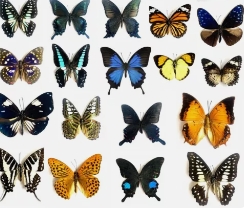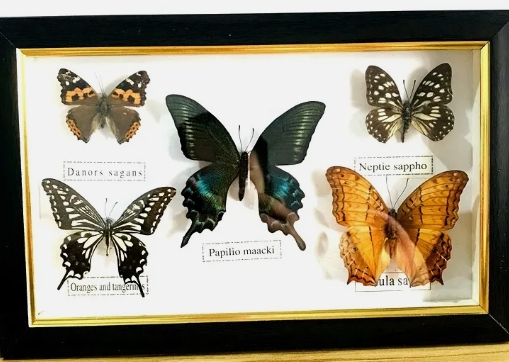Butterfly specimens are professional collections for the systematic preservation and display of butterflies and are widely used for scientific research, education and natural hobbies. The process of taxidermy involves steps such as capture, fixation, drying and display to ensure that the beauty and detail of the butterfly are preserved.
First, butterflies need to be initially preserved after capture with an appropriate fixing solution, such as ethanol. This step prevents the butterfly from spoiling during handling. The butterfly is then gently placed on a specimen board and its wings and body are held in place using specialized specimen pins to display its natural unfolding posture. This process requires careful manipulation to preserve the butterfly's original form and color.
Drying is a key step and usually involves placing the butterflies in a desiccant, such as silicone, or drying them naturally in a cool, dry environment. This step is intended to prevent the butterfly from becoming deformed, moldy or infested. After drying, the butterfly is carefully placed in a specimen box with a detailed label indicating the location, time and taxonomy of the butterfly.
Butterfly specimens not only help scientists study the taxonomy, ecology, and evolution of butterflies, but can also be used in education to help students understand the diversity and ecological importance of butterflies. For nature lovers and collectors, butterfly specimens are a true display of the colorful and delicate craftsmanship of the natural world, making them a valuable natural collection.




